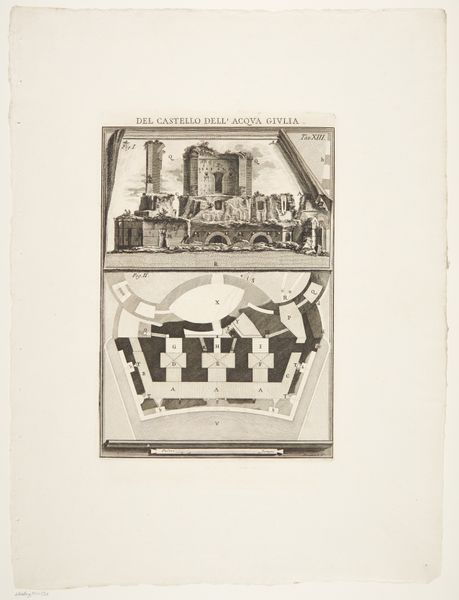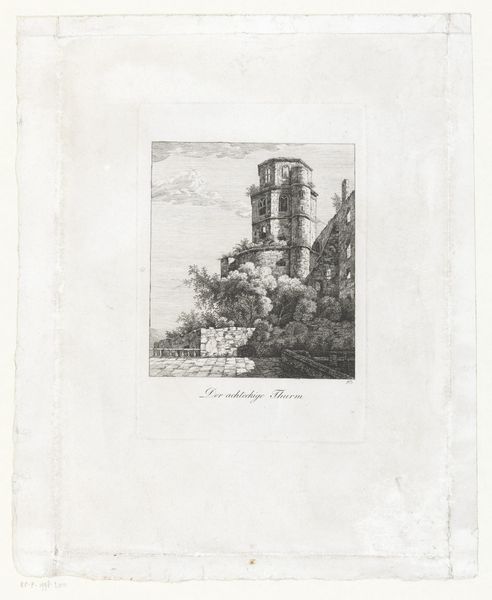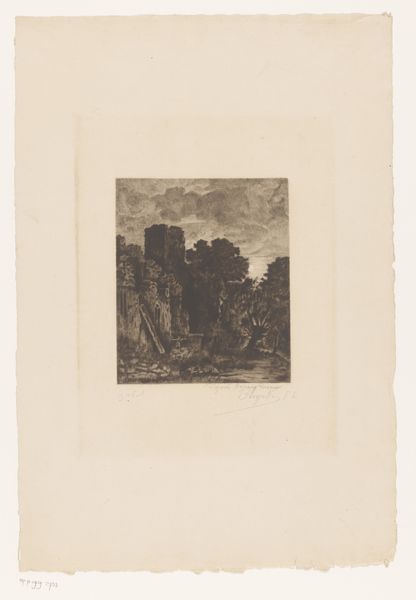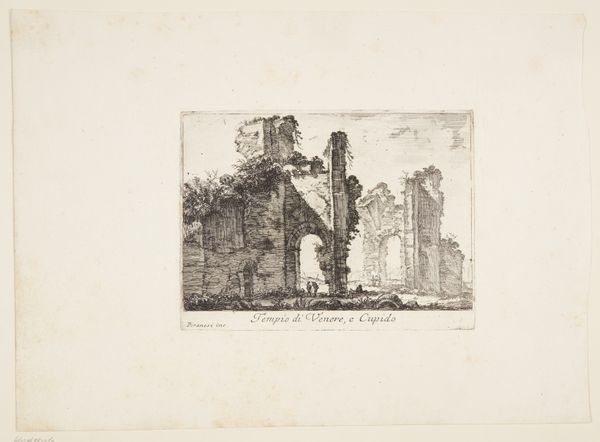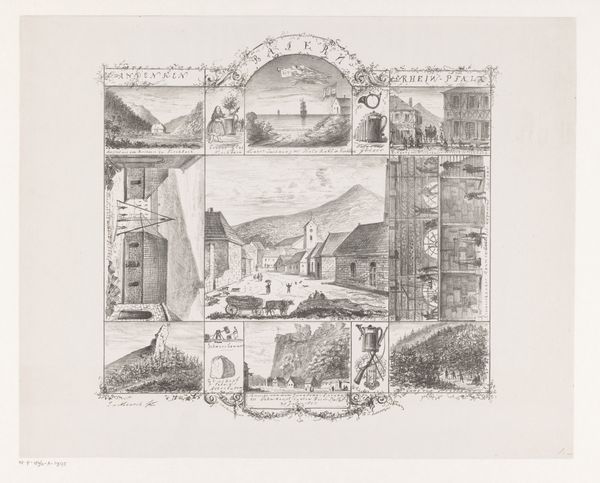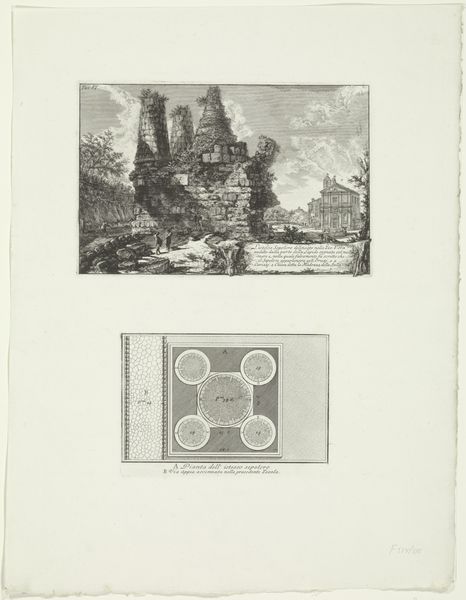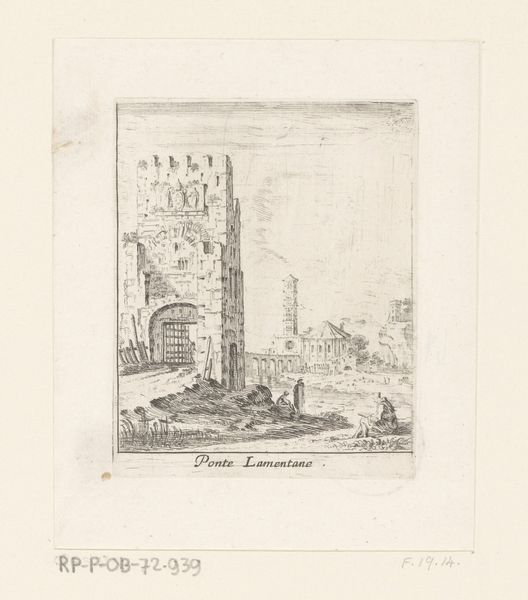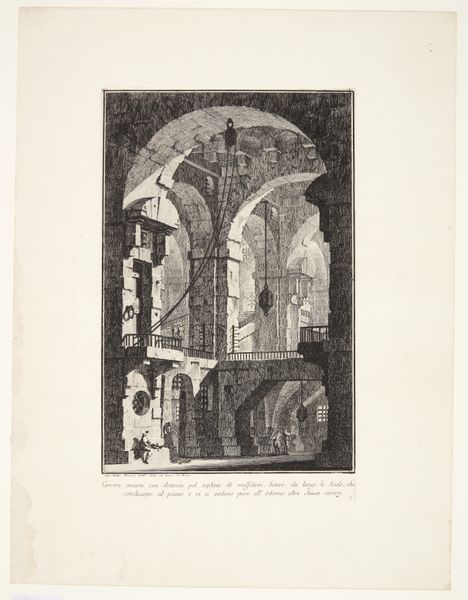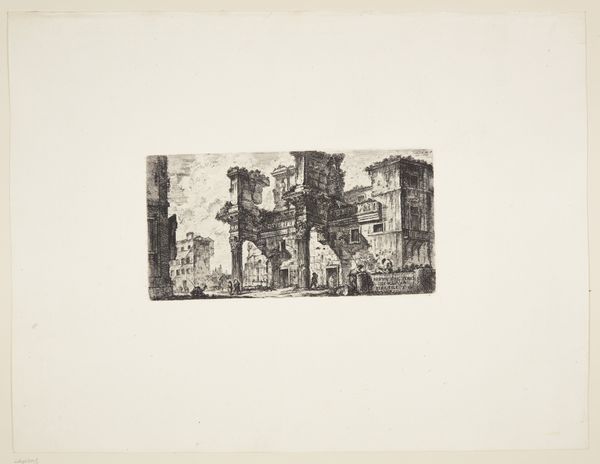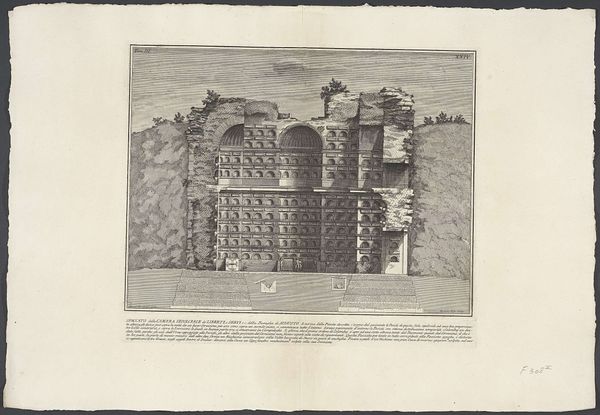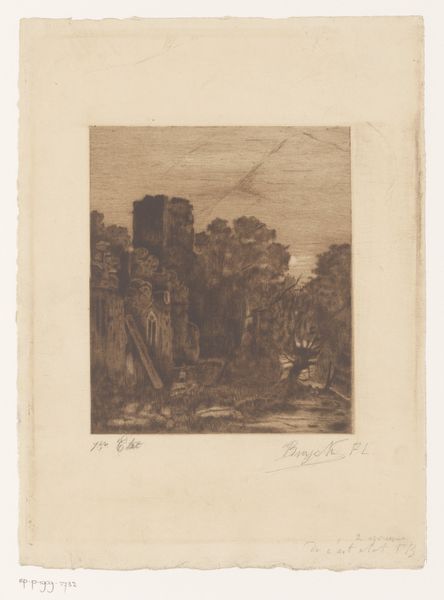
Side view of the Fountainhead and architectural sections 1761
0:00
0:00
Dimensions: 593 mm (height) x 445 mm (width) (bladmaal), 390 mm (height) x 210 mm (width) (plademaal)
Giovanni Battista Piranesi created this print of the Fountainhead and architectural sections with etching, a printing process using acid to corrode the uncovered parts of a metal plate to create a design. Piranesi's mastery of etching allowed him to capture incredible detail and texture. The built environment is here described with a precise and evocative language. Notice how the crisp lines define the ruins, the rough textures of the stonework, and the atmospheric effects of light and shadow. This wasn't just documentation. Piranesi was also creating an artistic statement. He romanticized ancient Rome, presenting it as a grand, awe-inspiring civilization, even in decay. The printmaking process itself is key to understanding the work's social context. Etchings like these were relatively affordable, making them accessible to a wider audience than original paintings. Piranesi was, in effect, mass-producing his vision of Rome. Ultimately, understanding Piranesi’s work means appreciating the interplay of material, process, and social context. He elevated printmaking to an art form, blurring the lines between documentation, artistic expression, and the marketplace.
Comments
No comments
Be the first to comment and join the conversation on the ultimate creative platform.
